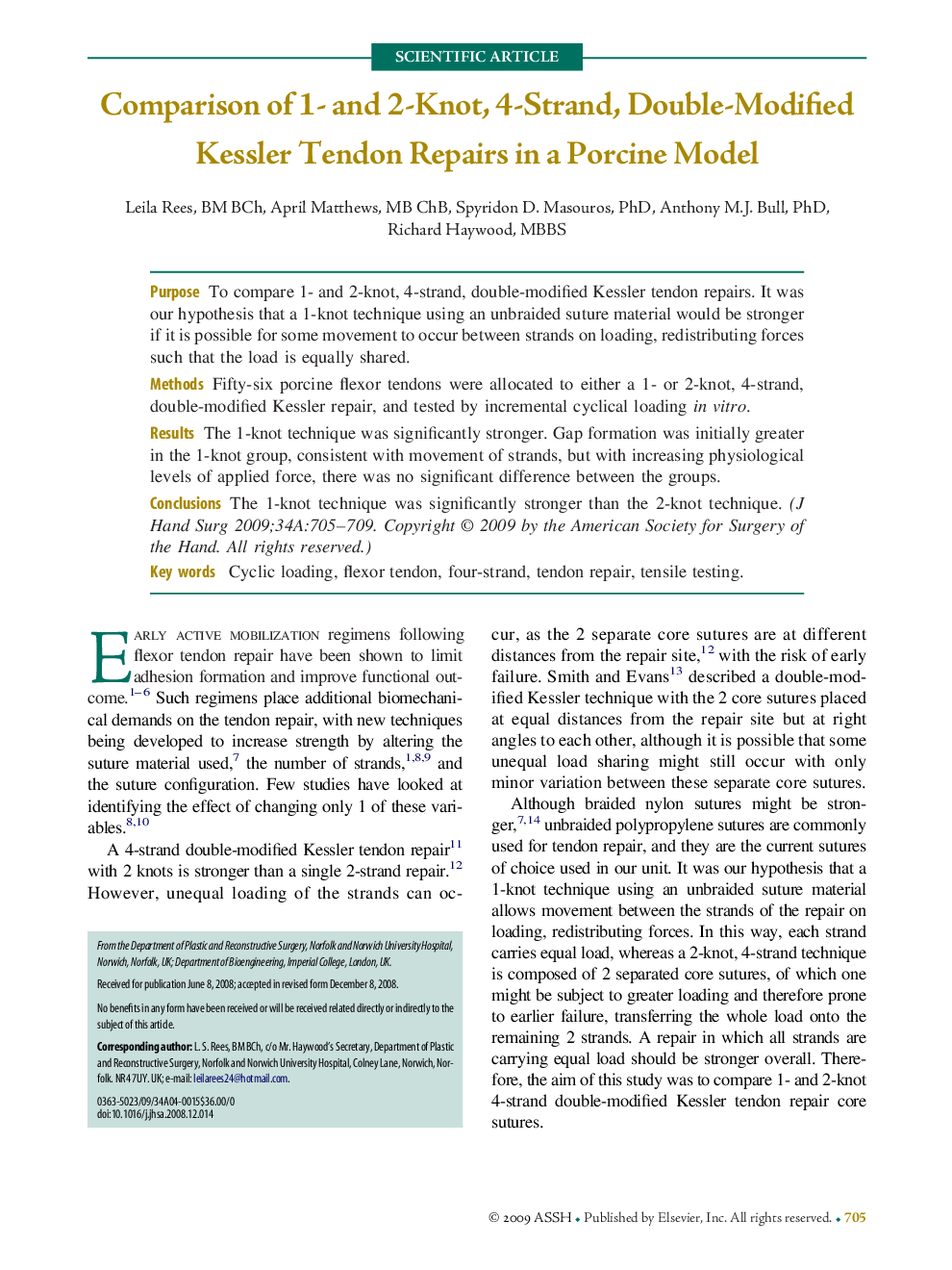| Article ID | Journal | Published Year | Pages | File Type |
|---|---|---|---|---|
| 4070684 | The Journal of Hand Surgery | 2009 | 5 Pages |
PurposeTo compare 1- and 2-knot, 4-strand, double-modified Kessler tendon repairs. It was our hypothesis that a 1-knot technique using an unbraided suture material would be stronger if it is possible for some movement to occur between strands on loading, redistributing forces such that the load is equally shared.MethodsFifty-six porcine flexor tendons were allocated to either a 1- or 2-knot, 4-strand, double-modified Kessler repair, and tested by incremental cyclical loading in vitro.ResultsThe 1-knot technique was significantly stronger. Gap formation was initially greater in the 1-knot group, consistent with movement of strands, but with increasing physiological levels of applied force, there was no significant difference between the groups.ConclusionsThe 1-knot technique was significantly stronger than the 2-knot technique.
